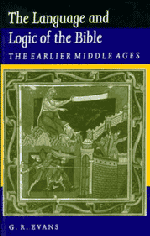Book contents
- Frontmatter
- Contents
- Preface
- Acknowledgements
- List of abbreviations
- List of ancient and mediaeval sources
- Biographical notes
- Introduction
- Part I The background
- Part II Lectio: surface and depths
- Part III Disputatio
- 8 Questions
- 9 Contradictory authorities
- 10 A new approach to resolving contradictions
- Conclusion
- Notes
- Select bibliography
- Index
10 - A new approach to resolving contradictions
Published online by Cambridge University Press: 01 June 2011
- Frontmatter
- Contents
- Preface
- Acknowledgements
- List of abbreviations
- List of ancient and mediaeval sources
- Biographical notes
- Introduction
- Part I The background
- Part II Lectio: surface and depths
- Part III Disputatio
- 8 Questions
- 9 Contradictory authorities
- 10 A new approach to resolving contradictions
- Conclusion
- Notes
- Select bibliography
- Index
Summary
Although many of the questions being raised in the schools took their origin from a problem perceived in the course of the study of the text of the Bible, we have seen that they were not all by any means to do with the Bible's use of language; some were doctrinal, some philosophical. But amongst those arising out of the text of the Bible two kinds of difficulty in particular presented themselves.
We have already looked at one of these difficulties in connection with the problem of signification. Hugh of St Victor confronts it when he examines the peculiar behaviour of biblical language. The literal meaning may be perfecta, the text making its statement fully without superfluity or the need to supply anything which has been left out; or it may be imminuta, and leave something to be ‘understood’ (subaudiendum); or it may include some extra word or element and repeat itself, and then we may describe it as superflua; or, as Hugh says, it may be such that ‘unless some alteration is made it means nothing, or it seems incongruous’. The kind of alteration Hugh has in mind here is grammatical, as in a case where the nominative of a noun plus a genitive pronoun replaces the genitive of a noun.
He gives examples:
Dominus in coelo sedes eius (Ps. 10:5), id est sedes Domini in coelo. […]
- Type
- Chapter
- Information
- The Language and Logic of the BibleThe Earlier Middle Ages, pp. 140 - 163Publisher: Cambridge University PressPrint publication year: 1984



